In which Sid and Doris find an interesting morning among the Mayas is followed by five hours of pot hole dodging.
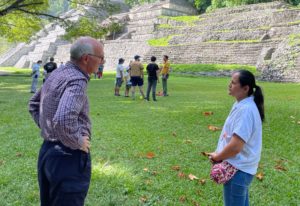 Mildred has a very clear idea about how much even well-meaning and attentive tourists can take in, which is just great. Her preferred clients are English. Perhaps we are more deferential? Or she says that to all the boys?
Mildred has a very clear idea about how much even well-meaning and attentive tourists can take in, which is just great. Her preferred clients are English. Perhaps we are more deferential? Or she says that to all the boys?
To give our many avid readers a bit of context for Doris’s pictures here are the bare bones. The Mayan city dates from about 200 BC and was abandoned around 900 AD. The hierolglyphs have been decoded and the dynastic history is well understood. In the eigtheenth century there was some Spanish tomb robbing and in the nineteenth century more academic work with photography and papier mache mould taking by French and British archaeologists. But with a thousand years’ of jungle growth and the lack of ground penetrating radar no one knew the extent of the site.
We are looking at temples, palaces and state offices, not the villas of the middle classes, such as they were, and still less the peasants’ houses which have all rotted away. About ten percent of the site’s stone buildings have been uncovered and tidied up, with much of the work directed in the second half of the last century by Alberto Ruz Lhuillier who found the tomb of Pakal the Great. Pakal was crowned king at twelve in 615 and ruled ’til he died in 683. (Last year we saw the Ravenna mosaics that date from about the same time.)
This period and immediately after, as his subjects finished his temple and tomb, was peak Campeche with about 25,000 people in the city and immediate agricultural hinterland. Experts believe that the area was then subject to an eighteen year drought (resulting in an increasingly panicky set of human sacrifices to pacify the rain god, terminating in the royal family which did the job) but despite the water engineering we see today the city was abandoned.
Though there are Spanish and English panels our visit was made much more enjoyable by Mildred’s interpretation. She also gave us the name of a restaurant half way to Campeche which was a very good call.
The route to Campeche is across flat country so the road is straight. This dullness would be fine if the road was also flat at the micro level. Mostly it is but from time to time there are suspension savaging pot holes, difficult to spot without the aid of shadows in the near-overhead sun. Even the trucks and 4x4s try to avoid them. What should be an easy, if dull, five hour drive is made rather stressful.
Sid drives, and Team Bonkers is on full alert for pot hole spotting. We get to the restaurant and eat too much, while observing a bird called a Grackle which bears a distinct resemblance to the Artemis Profit Bird.
Sid drives and Doris looks after the music and commentary. In twelve kilometres I have a surprise for you.What is it? A bend and then a roundabout!
Best of all was to see the Gulf of Mexico. There is always ice cream budget awarded to the first to see the sea – it is considered to be a team effort as Sid is still carefully examining the tarmac a few metres ahead of the car.
Old Campeche is a colonial town built over a Mayan town. Thanks to villainous seventeenth century privateers there are now anti-pirate walls. And with much land reclamation between the walls and the sea it feels quite safe. We are at Don Gustavo’s hotel on the most happening street though with a garden-facing room carefully chosen because it that does not get the full sound of beery merry making.
The barmy [sic – D.] evening was passed with a visit to the sea front’s dancing fountains and the smallest Scotch-egg style dinner that would validate sitting out drinking until nearly 9.30. As you may know, Sid and Doris spent a few years living in Dubai, overlooking the World’s Largest Dancing Fountain and so do not suffer from Large Fountain Anxiety unlike some of our reader(s). However this one has Colour to add to the spectacle.
PS Doris thought you might like photos of our home water feature and also the Dubai fountains.
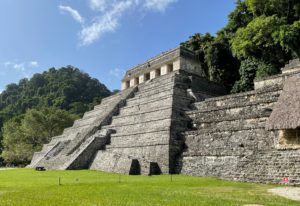
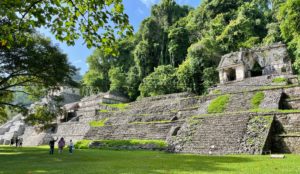
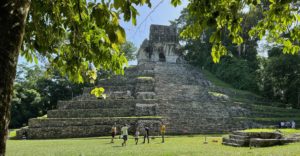
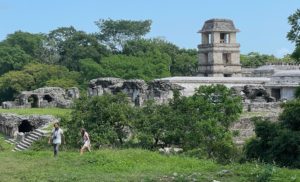
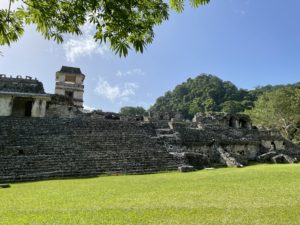
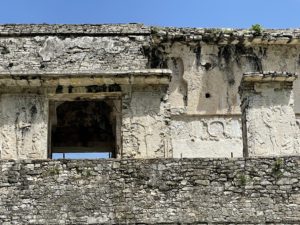
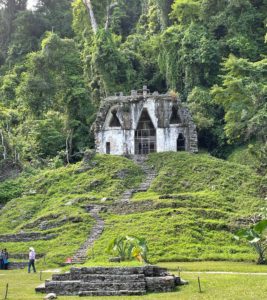

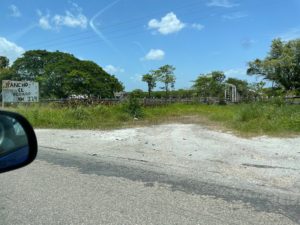
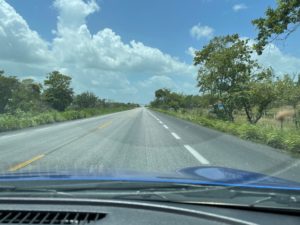
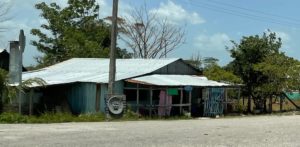



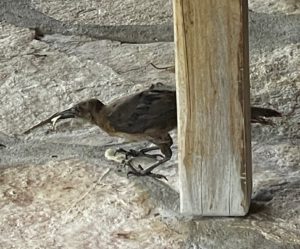
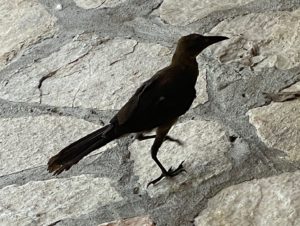


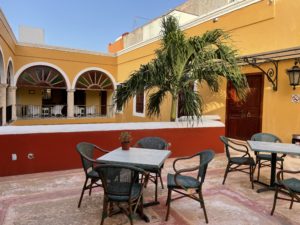
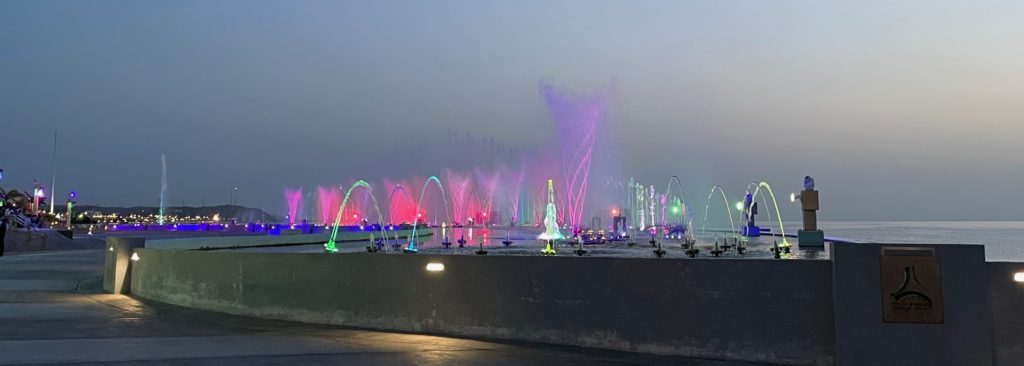



Colour…hmmm…something not previously contemplated… And that is not any ol’ Grackle but the mighty Great-tailed Grackle (Quiscalus mexicanus)! A worthy target, indeed.